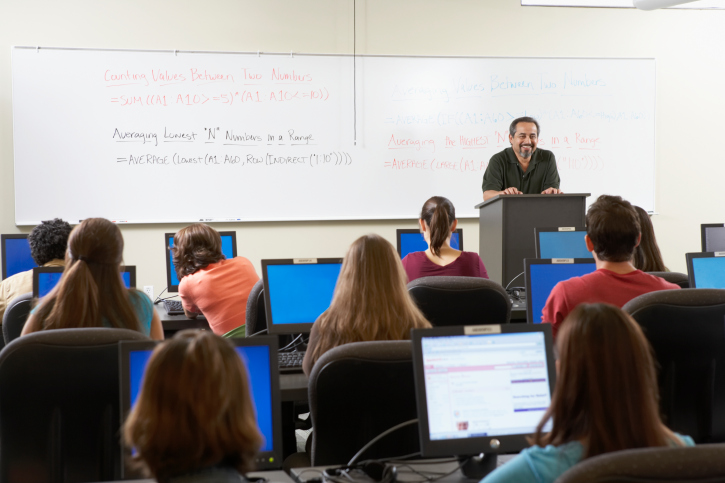A more efficient layout – it can define student success both at the high school level and at the higher education level. Poor designs mean it can be difficult to connect with the instructor, hear the lecture, and effectively take notes. In an environment where learning is a must, proper lecture room design has to be considered.
 Sight Lines: Today’s lectures are far from the droning old professor who simply moves from one point to the next without the need for students to even catch sight of him during the course of the lecture. Instead, they often involve multimedia demonstrations that students have to continually observe to truly remember. In some cases, they involve projectors, document cameras, and screens, while in the sciences, they often involve experiments. Ensure sight lines are maintained as you design the seating area.
Sight Lines: Today’s lectures are far from the droning old professor who simply moves from one point to the next without the need for students to even catch sight of him during the course of the lecture. Instead, they often involve multimedia demonstrations that students have to continually observe to truly remember. In some cases, they involve projectors, document cameras, and screens, while in the sciences, they often involve experiments. Ensure sight lines are maintained as you design the seating area.
Connectivity: Students are far from the pen and paper days of just a few years ago. Many will have tablets, laptops, and smart phones, some of which may require data or power connections at a student’s fingertips to function properly. These connections should be part of the planning process to ensure students have continual access to the materials they most require.
Aisle Spacing: Getting the right aisle design can be tricky, as you can lose viewing space trying to create the best possible aisle. In most cases, you want to avoid a center aisle and go with side aisles. Cross aisles can help, too, but they may not fit within the design. Consider a variety of layouts to ensure you get the best possible viewing area for all students.
Accessibility: Students with accessibility issues must also be able to enjoy the same opportunities as other students in the class, so creating specialized seating areas to address those concerns should be a priority during the process.
A lecture hall can be one of the best spaces within your school, but creating the right level of balance is the only way to optimize it. To learn more about how we can help, contact us today.



























